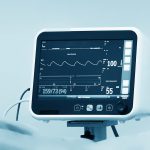Expanding into global markets presents major opportunities for medical device manufacturers, but it also introduces a maze of complex, country-specific regulatory pathways. From CE marking in the EU and 510(k) submissions in the US, to unique requirements in China, Brazil, and India, navigating medical device registrations across jurisdictions can be overwhelming.
With increased scrutiny under regulations like the EU MDR, rising post-market requirements, and more stringent approval timelines, manufacturers need a strategy to streamline country-specific medical device registrations to avoid costly delays and missed market opportunities.
The Challenge: Diverse and Fragmented Regulatory Landscapes
Each country has its own regulatory authority, classification system, and documentation expectations:
- United States (FDA): Requires 510(k), PMA, or De Novo submission with QSR compliance.
- European Union (EU): CE Marking under MDR 2017/745, with Notified Body involvement.
- China (NMPA): Extensive in-country testing, dossier translation, and local agent requirements.
- Brazil (ANVISA): Registration pathways vary by class; timelines can range from 6 to 24 months.
- India (CDSCO): Requires device classification confirmation, Form MD-14/15 applications, and authorized Indian agent support.
- Australia (TGA): Relies on conformity assessments and sponsors for ARTG inclusion.
The key difficulty is that most of these systems are non-harmonized, requiring tailored approaches to meet region-specific regulatory, clinical, and labeling expectations.
Step 1: Start with a Global Regulatory Strategy
A successful international device registration plan begins with a global regulatory strategy that:
- Prioritizes markets based on commercial potential and regulatory timelines
- Aligns registration efforts with product lifecycle stages
- Maps device classification across target regions
- Identifies which markets accept prior approvals (e.g., CE mark, FDA clearance)
This strategy ensures you pursue the most efficient regulatory pathways and avoid redundant testing or documentation.
Step 2: Identify Commonalities and Harmonization Opportunities
Despite regulatory differences, there are harmonization initiatives you can leverage to reduce duplication:
IMDRF (International Medical Device Regulators Forum)
Promotes aligned technical documentation (e.g., STED format), clinical evaluation principles, and post-market frameworks.
MDSAP (Medical Device Single Audit Program)
Accepted by regulators in the US, Canada, Australia, Brazil, and Japan. A single audit under MDSAP may fulfill requirements for multiple jurisdictions.
Reliance on Prior Approvals
Some countries accept CE Mark or FDA 510(k) as a basis for expedited local approvals. Examples include:
- Singapore’s HSA fast-tracks CE/FDA-approved devices.
- Australia’s TGA recognizes EU conformity assessments.
By mapping regulatory overlaps, you can plan a tiered submission approach that builds on earlier approvals.
Step 3: Develop a Master Technical File
One of the most effective ways to streamline submissions is to create a Master Technical File based on the Common Technical Document (CTD) or IMDRF STED format.
A well-structured file should include:
- Device description & intended use
- Risk management reports
- Clinical evidence
- Manufacturing details
- Quality system certifications
- Labeling & IFU templates
This master file becomes a single source of truth that can be adapted for each country-specific submission.
Step 4: Localize Intelligently
Localization is essential – but it should be targeted and strategic. Customize only the components required for each market:
- Translate documents only as per regulator requirements
- Adapt labeling to meet language and regional standards
- Adjust clinical data or post-market surveillance if country-specific evidence is required
Use a modular approach that reuses global core content while tailoring local modules (like Module 1 in eCTD) to speed up preparation.
Step 5: Utilize Digital Publishing & RIM Tools
Modern Regulatory Information Management (RIM) and publishing automation tools play a critical role in simplifying global submissions.
Benefits include:
- Centralized data and document repositories
- Real-time tracking of registration status per country
- Built-in validation checks against local requirements
- Version control and audit trails
- Seamless eCTD publishing where applicable
Digital tools help eliminate repetitive tasks, reduce errors, and keep global teams aligned during simultaneous submissions.
Step 6: Collaborate with Local Regulatory Experts
Every region presents unique challenges – language barriers, unwritten norms, changing expectations. Engaging in-country regulatory experts or authorized representatives helps you:
- Navigate local submission portals and workflows
- Manage communication with health authorities
- Resolve queries or deficiencies quickly
- Ensure post-market obligations like vigilance reporting are met
This local intelligence adds significant speed and accuracy to your submission process.
Step 7: Plan for Post-Market Requirements Early
Registration doesn’t end at approval. Many authorities require:
- Periodic Safety Update Reports (PSURs)
- Vigilance reporting
- Post-market clinical follow-up (PMCF)
- Re-certification or re-registration
Ensure your global post-market surveillance (PMS) system is capable of generating localized reports and tracking regional timelines.
Planning for these needs from the start ensures long-term compliance and market continuity.
Pro Tips for Managing Country-Specific Device Registrations
- Maintain a Regulatory Intelligence Feed: Stay updated on evolving requirements using tools like real-time alerts or regulatory databases.
- Use a Regulatory Submission Matrix: Track all markets, submission types, timelines, and documentation status in a centralized view.
- Centralize Ownership: Designate a global RA team to oversee consistency while working with local consultants.
- Set Realistic Timelines: Country approvals can vary from 3 to 24 months – build buffers into your launch plan.
- Build Reusable Templates: Standardize document structures for faster customization.
Conclusion: Streamlining is Strategy, Not Shortcut
Managing medical device registrations across multiple countries is a high-stakes task. But with a well-planned global strategy, structured documentation, smart use of digital tools, and local partnerships, you can simplify the complexity.
Streamlining doesn’t mean skipping steps – it means building a scalable, compliant, and efficient registration process that works globally.
Need help simplifying your global device submissions?
Explore expert-led regulatory solutions at MakroCare to accelerate country-specific approvals and ensure compliance across markets.


